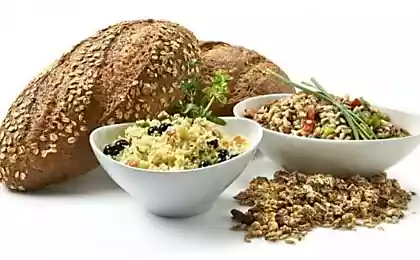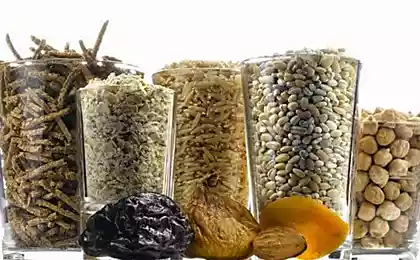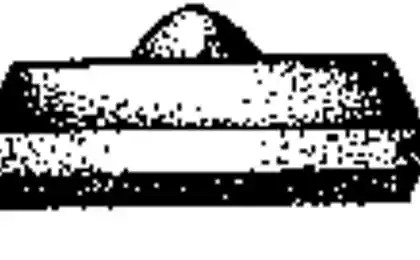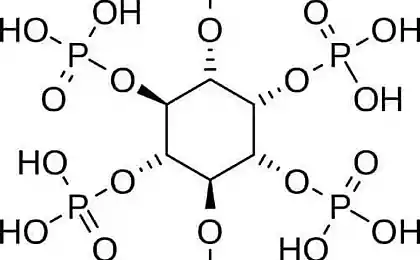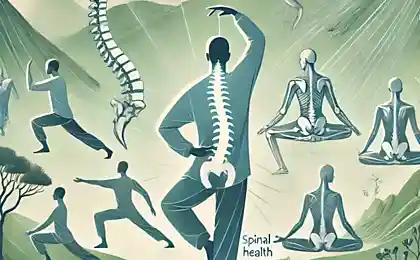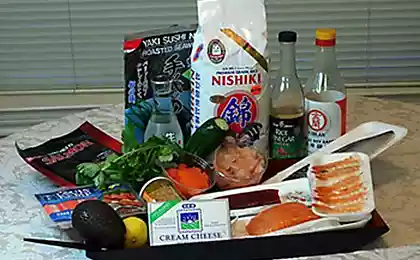1027
IMPORTANT! WHAT you need to know about grains: phytic acid in popular products
Rye, wheat, spelt, and barley clown
Indigenous peoples knew how to prepare grains and beans so as to ensure their optimal usefulness. During Dr. price in the valley of Placental were not doctors and dentists, because the inhabitants did not need their services. They consumed large amounts of rye sourdough bread.
A detailed analysis of the Swiss diet shows that compared to white bread bread made from high Alpine rye, brings to the daily diet of 0.1 gram of phosphorus. This is not a huge difference in the nutrient content that supposedly exists between whole grain foods and white flour products. To explain this fact seems to be that the inhabitants of the Swiss Alps did not use the whole rye grain.

As in many other cultures of the world, the indigenous people of Switzerland began to process whole grain rye. However, after the slow grinding stone mill they sifted the corn, removing about 1/4 of the total weight of flour obtained in the form of impurities.
Bran and embryo account for about 15-20% of the whole grain. For clarity let me explain: if in the beginning there was one Cup of flour, after sifting in the glass was still 3/4 of the original amount of flour.
Probably in rye bread still contained a negligible amount of vitamins from the bran and germ. Even without scientific knowledge about phytic acid and lecting the Swiss removed the phytic acid by using fermentation, and toxic lectins by sieving and, consequently, the mechanical separation of the germ and bran.
In this regard, it is possible that safe use of the most common cereals, like rye, for example wheat, Kamut, spelt and barley require a significant or complete removal of the germ and bran.
The inhabitants of the mountainous Alps, cooked rye bread in large chunks and knead the dough by hand for four and a half hours. Typically, the people of the valley, Recently baked bread once a month, but they also existed an ancient recipe in which bread was prepared by the efforts of the whole community once a year. This means that all the rest of the year the grain was maturing. There is evidence that aging grains under certain conditions removes phytic acid and may cause further collapse of other grain toxins.
The code we weigh in the mind, how useful or harmful the use of one or another grain product, we often do not attach importance the importance of other products in combination with cereals.
The usefulness of cereals and grains for the health of your teeth depends on the amount contained in them of phytic acid and other toxins, as well as how much calcium is in your diet.
The indigenous inhabitants of Switzerland, which were almost absolute resistance to tooth decay understood this principle and used rye bread with cheese and milk at one meal. This combination of bread with dairy products rich in calcium and vitamin C to protect them from the residual grain toxins not destroyed by milling, sieving, fermentation, baking and aging.
The secret of the health of the inhabitants of the valley of Recently is a special preparation of grain, after which there were few toxins, as well as in combination of cereals with milk, which had a lot of calcium, phosphorus and fat-soluble vitamins.
Starchy and dairy products at the same time practiced not only in high Alpine villages. In Africa there is a traditional dish made of wheat called kishk, and its preparation is a very time consuming process to make the wheat safe to eat. First, the wheat is boiled, dried and then milled. The grain is completely cleaned from the shell just as it is done with the rye valley residents, Recently. In another vessel leavens the milk. After that milk and wheat wander in 24-48 hours, and finally dried for storage.
In the ancient beer recipes are actually used bran and germ of the grain. Beer production in the old days was based on fermentation, which was allowed to extract from the bran and germ and vitamins, and not to expose beer lovers to the risk of consumption of grain toxins. Unfortunately, modern types of beer brewed in large enterprises can cause tooth decay.
Useful oats
The Gaelic living in the Outer Hebrides regularly consumed large amounts of oats, but they did not suffer from scurvy, rickets, or tooth decay. On the contrary, among the inhabitants of the more modern parts of Scotland, where also, eating oat products, rickets was very common. The difference between these two groups of people who ate oats, is the presence or lack of fat-soluble nutrients in their diet and methods of cooking with oats.
After harvest, the oats were stored on the street, and it is partially germinated within a few days or weeks in the rain and the sun. The husk was collected and subjected to fermentation for weeks or longer. This fermented liquid can be used as enriched with enzymes of starter cultures for the fermentation of oats. Grain is fermented from 12-24 hours to one week.
It is not clear, use the oats whole or after preliminary purification of the bran. There is also no detailed information on how to prepare themselves the dishes of oats. In the modern oat cereal bran have been removed.
The food of the inhabitants of the Outer Hebrides was extremely rich in fat-soluble vitamins A and D, which were obtained from cod heads stuffed with cod liver. Similar dishes protect people from the effects of phytic acid. Their diet also contained a lot of mineral substances, the source of which was the shellfish, and this has contributed to the recovery of mineral deposits, possibly lost or not acquired, if the oats were still phytic acid.
The combination of the methods of cultivation, thorough cooking oats and nutrition with plenty of minerals and fat-soluble vitamins talked about the fact that oats were a useful staple for the isolated Gaelic peoples.
In contrast to the rigorous methods of harvesting and storage of oats among indigenous cultures, even organic whole oats you buy in the store are subjected to heat treatment, and especially not left in the fields to germinate and dry.
It is believed that oats require heat processing, such as high fat content of this grain can easily lead to rancidity of the grain during storage. However, at high temperatures, the oats have completely lost enzyme called phytase, so pre-soaking and fermentation of cereals completely ineffective for the destruction of phytic acid.
It's amazing how many people I've ever met people suffering from tooth decay, as well as their children who regularly eat oatmeal. This confirms the results obtained by Dr. Mellanby for many years with people and animals. In experiments on the study of rickets oats, which first soaked and then subjected to fermentation for two days, lost the ability to cause rickets.
The problem of making really healthy dishes made from oats is that you need to special order oats, a grain which is still alive and can germinate. I'm not sure whether you can make heat treated oats safe for the teeth.
I would suggest to sprout oats for two days, then dry it and remove bran by grinding and sieving, or into flakes. After this you need to give the oats to ferment with the addition of a starter culture at room temperature for 24 hours before use. The consequences of eating improperly processed oats for our teeth is, unfortunately, known.
Useful rice
In those countries where rice is the staple food, rarely eat brown rice, eat together with the shell. In searching for the oldest and traditional methods of cooking, I found a few mentions of partially polished rice.
Traditionally, the rice stored in the husk and pounded before cooking. What percentage of the shell is cleaned with a grain of rice depends on the rice varieties, as well as from a variety of foods in the diet.
The old methods of processing rice included grinding with simple devices, such as the grinding of the rice with stones that were removed with grain a significant part of the bran and germ. However, a number of shell and germ remain.
The duration of the subsequent fermentation, and especially the varieties of rice to determine how much of the bran will remain in the end. It is reasonable to assume that the result of the whole process needs to be cleaned 50% of the bran. Have just milled rice usually remains a certain number of embryos, and embryos do not exist polished.
Rancid rice is characterized by a bitter taste. Several studies on nutrient absorption was discovered that eating brown rice does not lead to absorption of more nutrients in comparison with peeled rice.
In one study, a comparison was made of brown rice and polished (when removed a large part of the bran and germ, but the rice is polished to white). Despite the fact that brown rice contains more nutrients, the difference in the final number of utilized substances were not.
This apparent contradiction could be explained by the presence in the rice phytic acid and other elements that hinder the assimilation of nutrients. Another study showed that the combination of rice with Kale, rich in vitamin C, neutralized phytates that inhibit iron absorption. Since rice quickly go rancid, keep it in the husk or in the form of white rice. In most cultures, its use, brown rice, almost never occurs.
In the type of food where rice is the main product, rice toxins neytralizuya acidic fruits and vegetables, rich in vitamin C, offal and giblets, which contains large amounts of fat-soluble vitamins, and sometimes via the fermentation of rice or beans. White rice, which is completely free of bran and germ can cause lack of vitamin B1, if he dominates in the diet.
This condition is known as beriberi. It rarely develops in people who consume polished rice, which left a certain amount of bran. I met many people from countries where rice is the staple food, which is a perfect white teeth and absolutely no tooth decay despite the fact that they grew up on white rice.
In Indonesia, prepared a special rice cakes, called Bram. cooking rice undergoes an intensive process of fermentation when he walks for 5-6 days and then dried in the sun for another 5-7 days.
Millet and rice are also traditionally fermented for several weeks with fish, pork or shrimp, and then used as seasoning. The most useful rice I have ever eaten, partially polished (it is noticeable stripes remaining shell) which was steeped in fermented brown rice that is described in the sixth Chapter.
Helpful corn
For cooking healthy meals from corn feedstock is even more important. As a result, there is a wide variety of traditional methods of processing corn, from simple roasting to two weeks of fermentation.
When prepared from corn flour, it is everywhere subjected to a process of nixtamalization. While the corn soaked in an alkaline solution, resulting in releasing nicotinic acid (vitamin BS), and then purified from the husk.
Modern corn tortillas tortillas, chips and corn flour does not contain bran and germ, or contain them in very small quantities. All these products are nixtamalization.
Usually in corn products with the cleaned shell and the germ contains a smaller amount of phytic acid and other toxic substances than whole corn grain, cannot give a clear recommendation as to how much corn should be eaten in order not to jeopardize the health of your teeth.
Obviously, the corn products similar to unbleached wheat flour, which is not subjected to fermentation. If the dish contains whole corn grain and he was not allowed to ferment for a sufficient time, then it certainly contains a lot of phytic acid and lectins, which prevent the absorption of nutrients. I am sure that you should avoid foods containing whole corn or just corn, or grain, in the form of sprouts.
Another important problem associated with genetically modified corn. Thanks to cross-pollination, even genetically unmodified maize varieties may have the genetic changes. Usually animals, unless they have to, do not eat genetically modified corn. Those animals that ate that corn, have reproductive and other problems.
OGI is a traditional West African fermented cereals — a good example of what efforts were needed to protect corn and sorghum and millet for use by children. After harvesting, the grain is dried in the sun and stored in the husk. The corn is then soaked for 1-3 days. The outer husk, bran and germ are completely removed. Thereafter, the mixture was fermented for 2-3 days, cooked, and finally dried for further storage.
South America is a fermented corn dish called gold. Corn boiled in a solution of calcium hydroxide in order to free the nicotinic acid, or Niacin. The shell or pericarp is cleared. This dish is fermented for 1 to 14 days.
Not everywhere and not always cooking from crops requires purification of bran or even fermentation. In Ethiopia preparing injara bread, which is traditionally used cereals Teff. In my existing recipe engery used whole grain sorghum. In this case, sorghum is fermented into a rich enzymes yeast within 48 hours.
In India use tortillas chapatis prepared from whole wheat flour without fermentation. It seems that in both cases, was taken by the recipe that worked perfectly with a certain kind of grain, that is with a grain of Caffa in Ethiopia and rice in India, and then used with a different, more modern for these crops, grain.
Over the past few hundred years thanks to the development of trade and immigration, as well as borrowing practices in different cultures appeared recipes from whole grain cereals, which at first glance seem traditional, but in fact is borrowed, and inefficient to eliminate grain toxins.
Sometimes you have to do detailed work to find the really old and well-preserved recipes from grain. There are many methods of grain processing, which requires large amounts of time and energy. I'm sure if it were possible to use similar methods with less effort and to preserve the health or to achieve the best results, leaving the grain intact, the indigenous cultures would have done so. So I think what is described here labour-intensive methods of grain handling and slow fermentation to bring the best fruits from the point of view of health.
Features of processing of grain from traditional peoples:
The content of phytic acid in popular products
Avoid whole grain products in industrial production. The bread made with yeast, is stored 40-80% of the initial amount of phytic acid. However, if a yeast bread made from unbleached white flour, it is not enough phytic acid. You have to pay a high price for the unwillingness or inability to clean the grain from much of the bran and germ, especially of such grains as wheat, rye, spelt, Kamut and barley.
I've heard about several cases when the use of leavened wheat bread with spelt led to serious tooth decay. This is because fermentation, although effective for the destruction of phytic acid, does not neutralize all the grain toxins, including lectins, in some varieties and types of crops.
This suggests that it is best to avoid industrial produced bread, crackers, nutritional bars, pasta, cereal and various other products with whole grains that you can find in storeOh. No exceptions.
Since quinoa and buckwheat are pseudocroup, not true cereals, they can be consumed whole provided that they removed the phytic acid. But I can't say this with complete confidence. Not knowing what kind of toxin in the grain causes the development of caries and, not being able to test each product purchased, I can't tell which whole grain product from the store may be safe for your teeth.
Do not eat bread made from sprouted grains. Another harmful food for teeth are industrially manufactured products made from sprouted whole grains. Germination insufficiently neutralizes the plant toxins in the whole grains, and such foods can lead to significant tooth decay.
Do not eat most gluten-free grain products. Many gluten-free products made using brown rice. It is very high content of phytic acid, and such products should be avoided. On the other hand, gluten-free products on the basis of white rice do not contain much phytic acid or grain toxins.
Do not eat cereals. These products now add bran or whole grain under the guise of a widely advertised dietary fiber. Cereals with whole grains contain a lot of phytic acid and probably large amounts of other grain toxins.
Do not use nutritious bars. In many types of granola bars are whole grains, which are not given enough to ferment. They are very high concentration of grain toxins. There is also a lot of sugar.
Reduce intake of popcorn. Popcorn is a certain amount of phytic acid. It definitely should not be used if you have tooth decay. The rest of you can eat popcorn in moderation.
Recommendations for the safe consumption of crops
Cereals with low phytic acid and pectin
The following simple tips will help you to reduce or eliminate the possibility of harmful effects of crops on your teeth. It is very important that the grain less grain toxins. These recommendations relate to grain products, which are safe day health of your teeth and are easy to acquire. Many of the commercially available cereals are a kind of compromise. So I wouldn't call them perfect, but they are not so bad. The next part is designed specifically for the reader who wants to preserve the health of their teeth, not wasting time in the kitchen in an attempt to properly cook grits.
The semolina is the part of wheat grain that remains after removal of bran and germ. It is used for making pasta and couscous. It is not clear how useful such unfermented industrially processed grain products are food, but they will have little phytic acid if they are not made from whole grains. Traditionally, couscous and pasta is made from semolina and other cereals without bran, which was somehow fermented or fermented. As far as I know, on an industrial scale do not.
Any kind of bread made from unbleached white flour, will contain a small amount of phytic acid. Fermented sourdough bread is the best way to consume unbleached flour. The sourdough bread from unbleached flour, which has a sour taste is the best grain product available in Western culture.
However, not all kinds of sourdough bread are the same. This bread needs to ferment at least 16 hours and have a sour taste. There are bakers who grind whole wheat or rye, and remove the bran and germ before cooking test, and thus get a great loaf of yeast bread.
In rice phytic acid little. It seems that white rice Jasmine and basmati rice in health food stores contain a certain number of embryos, because they have a brownish color. And the white rice is not as unhealthy as white flour. For cooking perfect rice that is first aged for one year, polished to clear half or more of bran and germ, which is then allowed to ferment.
Since most of us are not able to do such a procedure on their own, then we have to choose between high quality white rice, and partially polished rice or brown rice, cooked with leaven, rich in phytase. In the Chapter of recipes there is a recipe based on brown rice. If you are not going to use sourdough with phytase, then choose white rice.
Corn should be fermenting, like other cereals. In stores you can buy different types of corn tortillas and other products from corn, is free of bran and germ. These products apparently contain little phytic acid and they should not contribute to the development of caries. If you eat any of those "compromise" products, please note that regular consumption of unfermented grains can potentially lead to negative consequences for your health.
Calcium. Grains combine well with cheese, exactly as it happened in the valley of Recently. Calcium in cheese will counteract the negative properties of grains, nuts or beans. If you eat bread, eat it with a big piece of cheese or a glass of raw milk, or with both. Lentils goes well with yogurt, which can be submitted separately. Calcium limits the ability of oatmeal to cause the development of rickets. When the food has a vitamin D deficiency, even cereals that have no phytic acid can Deplete calcium reserves.
Here is an important key to safe consumption of the grain products you eat them along with foods that are rich in calcium.
Vitamin C is largely counteracts the negative effects of those substances in grains that inhibit the absorption of nutrients. Add foods high in vitamin C when you are going to eat food with grain, nuts, beans or seeds.
Folic acid. It is likely that in combination with vitamin C folic acid plays an important role in protecting the body from the negative impact of grain products. A large amount of folic acid contained in the liver of various animals, as well as in beans, spices, seaweed, leafy green vegetables and asparagus.
Vitamin D greatly reduces the negative impact of whole grain products on the absorption of calcium. The more grains you consume, particularly oatmeal or whole grains, the more you need vitamin D. there is Also the upper limit of the ability of vitamin D to block the negative effect of whole grain products. So even if people use more than enough cod liver oil, but their diet is lots of whole grains, they can cause problems with teeth. It is therefore important to consume grain products, which left phytic acid or grain toxins.
Protein. Traditional ways of preparing nuts combine roasted nuts with meat soups. Probably, the addition of protein to the dishes of grains, nuts, seeds or beans weakens their ability to prevent the absorption of nutrients.
Summary of recommendations on the use of grain products and nuts
Do not eat products containing whole grains or added bran.
Do not eat whole grains, not cooked at home.
Do not eat sprouted whole grains.
Do not eat foods made with bleached flour.
Don't eat sunflower seeds very often.
If you regularly eat grain products, nuts, seeds and beans, you need to include in your diet plenty of calcium and vitamins C and D.
Grain products at home
Introductory recommendations
If you are going to use purchased flour, I suggest to take partially refined flour, in particular revitalisierung unbleached organic white flour. Do not use purchased whole wheat flour. In unbleached flour little phytic acid. Remember, however, that in General the use of only some of the bread prepared without leaven, is not the ideal healthy diet. Choose white rice, basmati, Jasmine or sushi rice for preparing home-cooked meals with rice.
Netlenka or bleached flour
If the package is not specifically stated that the flour is not bleached, it means that she was subjected to treatment to benzoyl peroxide or chlorine dioxide, to make it bright white. Many manufactured varieties of flour potassium bromate, and various vitamins. Whenever possible, choose organic, unbleached flour. Flour can quickly progorkaet, so svezhemoloty flour is the most useful.
Additional recommendations
In indigenous cultures around the world practice in the processing of grain includes milling just before use. Many of you have the book, which offered a variety of delicious recipes, including dishes using whole grains.
These dishes are prepared on the basis of soaked and fermented grains, which are easier to digest. I would be cautiously suggested not to use wholegrain flour. After you have just milled flour, it is necessary to sift, to separate it from the bran and germ. You can then follow the recipe.
As a result, you get a delicious, and at the same time easily digestible food. Crops which will be sure to separate the bran and germ is corn, rye, spelt, Kamut, barley and wheat and kindred cereals. As for the rice, you will need to decide whether you want to use soaked brown rice, partially polished rice soaked in Fitzroy sourdough, or white rice.
If possible, I suggest to start with brown rice in a vacuum pack (since rice is rancid quickly), clear with him about 50% of the bran, and then soak it in Fitzroy leaven, according to the instructions from the sixth Chapter. The fermenting rice for making the cakes, will increase its nutritional value.published
Ramiel Nagel "Natural treatment of caries"
P. S. And remember, only by changing their consumption — together we change the world! ©
Source: shakti-osher.livejournal.com/26359.html
Indigenous peoples knew how to prepare grains and beans so as to ensure their optimal usefulness. During Dr. price in the valley of Placental were not doctors and dentists, because the inhabitants did not need their services. They consumed large amounts of rye sourdough bread.
A detailed analysis of the Swiss diet shows that compared to white bread bread made from high Alpine rye, brings to the daily diet of 0.1 gram of phosphorus. This is not a huge difference in the nutrient content that supposedly exists between whole grain foods and white flour products. To explain this fact seems to be that the inhabitants of the Swiss Alps did not use the whole rye grain.

As in many other cultures of the world, the indigenous people of Switzerland began to process whole grain rye. However, after the slow grinding stone mill they sifted the corn, removing about 1/4 of the total weight of flour obtained in the form of impurities.
Bran and embryo account for about 15-20% of the whole grain. For clarity let me explain: if in the beginning there was one Cup of flour, after sifting in the glass was still 3/4 of the original amount of flour.
Probably in rye bread still contained a negligible amount of vitamins from the bran and germ. Even without scientific knowledge about phytic acid and lecting the Swiss removed the phytic acid by using fermentation, and toxic lectins by sieving and, consequently, the mechanical separation of the germ and bran.
In this regard, it is possible that safe use of the most common cereals, like rye, for example wheat, Kamut, spelt and barley require a significant or complete removal of the germ and bran.
The inhabitants of the mountainous Alps, cooked rye bread in large chunks and knead the dough by hand for four and a half hours. Typically, the people of the valley, Recently baked bread once a month, but they also existed an ancient recipe in which bread was prepared by the efforts of the whole community once a year. This means that all the rest of the year the grain was maturing. There is evidence that aging grains under certain conditions removes phytic acid and may cause further collapse of other grain toxins.
The code we weigh in the mind, how useful or harmful the use of one or another grain product, we often do not attach importance the importance of other products in combination with cereals.
The usefulness of cereals and grains for the health of your teeth depends on the amount contained in them of phytic acid and other toxins, as well as how much calcium is in your diet.
The indigenous inhabitants of Switzerland, which were almost absolute resistance to tooth decay understood this principle and used rye bread with cheese and milk at one meal. This combination of bread with dairy products rich in calcium and vitamin C to protect them from the residual grain toxins not destroyed by milling, sieving, fermentation, baking and aging.
The secret of the health of the inhabitants of the valley of Recently is a special preparation of grain, after which there were few toxins, as well as in combination of cereals with milk, which had a lot of calcium, phosphorus and fat-soluble vitamins.
Starchy and dairy products at the same time practiced not only in high Alpine villages. In Africa there is a traditional dish made of wheat called kishk, and its preparation is a very time consuming process to make the wheat safe to eat. First, the wheat is boiled, dried and then milled. The grain is completely cleaned from the shell just as it is done with the rye valley residents, Recently. In another vessel leavens the milk. After that milk and wheat wander in 24-48 hours, and finally dried for storage.
In the ancient beer recipes are actually used bran and germ of the grain. Beer production in the old days was based on fermentation, which was allowed to extract from the bran and germ and vitamins, and not to expose beer lovers to the risk of consumption of grain toxins. Unfortunately, modern types of beer brewed in large enterprises can cause tooth decay.

Useful oats
The Gaelic living in the Outer Hebrides regularly consumed large amounts of oats, but they did not suffer from scurvy, rickets, or tooth decay. On the contrary, among the inhabitants of the more modern parts of Scotland, where also, eating oat products, rickets was very common. The difference between these two groups of people who ate oats, is the presence or lack of fat-soluble nutrients in their diet and methods of cooking with oats.
After harvest, the oats were stored on the street, and it is partially germinated within a few days or weeks in the rain and the sun. The husk was collected and subjected to fermentation for weeks or longer. This fermented liquid can be used as enriched with enzymes of starter cultures for the fermentation of oats. Grain is fermented from 12-24 hours to one week.
It is not clear, use the oats whole or after preliminary purification of the bran. There is also no detailed information on how to prepare themselves the dishes of oats. In the modern oat cereal bran have been removed.
The food of the inhabitants of the Outer Hebrides was extremely rich in fat-soluble vitamins A and D, which were obtained from cod heads stuffed with cod liver. Similar dishes protect people from the effects of phytic acid. Their diet also contained a lot of mineral substances, the source of which was the shellfish, and this has contributed to the recovery of mineral deposits, possibly lost or not acquired, if the oats were still phytic acid.
The combination of the methods of cultivation, thorough cooking oats and nutrition with plenty of minerals and fat-soluble vitamins talked about the fact that oats were a useful staple for the isolated Gaelic peoples.
In contrast to the rigorous methods of harvesting and storage of oats among indigenous cultures, even organic whole oats you buy in the store are subjected to heat treatment, and especially not left in the fields to germinate and dry.
It is believed that oats require heat processing, such as high fat content of this grain can easily lead to rancidity of the grain during storage. However, at high temperatures, the oats have completely lost enzyme called phytase, so pre-soaking and fermentation of cereals completely ineffective for the destruction of phytic acid.
It's amazing how many people I've ever met people suffering from tooth decay, as well as their children who regularly eat oatmeal. This confirms the results obtained by Dr. Mellanby for many years with people and animals. In experiments on the study of rickets oats, which first soaked and then subjected to fermentation for two days, lost the ability to cause rickets.
The problem of making really healthy dishes made from oats is that you need to special order oats, a grain which is still alive and can germinate. I'm not sure whether you can make heat treated oats safe for the teeth.
I would suggest to sprout oats for two days, then dry it and remove bran by grinding and sieving, or into flakes. After this you need to give the oats to ferment with the addition of a starter culture at room temperature for 24 hours before use. The consequences of eating improperly processed oats for our teeth is, unfortunately, known.

Useful rice
In those countries where rice is the staple food, rarely eat brown rice, eat together with the shell. In searching for the oldest and traditional methods of cooking, I found a few mentions of partially polished rice.
Traditionally, the rice stored in the husk and pounded before cooking. What percentage of the shell is cleaned with a grain of rice depends on the rice varieties, as well as from a variety of foods in the diet.
The old methods of processing rice included grinding with simple devices, such as the grinding of the rice with stones that were removed with grain a significant part of the bran and germ. However, a number of shell and germ remain.
The duration of the subsequent fermentation, and especially the varieties of rice to determine how much of the bran will remain in the end. It is reasonable to assume that the result of the whole process needs to be cleaned 50% of the bran. Have just milled rice usually remains a certain number of embryos, and embryos do not exist polished.
Rancid rice is characterized by a bitter taste. Several studies on nutrient absorption was discovered that eating brown rice does not lead to absorption of more nutrients in comparison with peeled rice.
In one study, a comparison was made of brown rice and polished (when removed a large part of the bran and germ, but the rice is polished to white). Despite the fact that brown rice contains more nutrients, the difference in the final number of utilized substances were not.
This apparent contradiction could be explained by the presence in the rice phytic acid and other elements that hinder the assimilation of nutrients. Another study showed that the combination of rice with Kale, rich in vitamin C, neutralized phytates that inhibit iron absorption. Since rice quickly go rancid, keep it in the husk or in the form of white rice. In most cultures, its use, brown rice, almost never occurs.
In the type of food where rice is the main product, rice toxins neytralizuya acidic fruits and vegetables, rich in vitamin C, offal and giblets, which contains large amounts of fat-soluble vitamins, and sometimes via the fermentation of rice or beans. White rice, which is completely free of bran and germ can cause lack of vitamin B1, if he dominates in the diet.
This condition is known as beriberi. It rarely develops in people who consume polished rice, which left a certain amount of bran. I met many people from countries where rice is the staple food, which is a perfect white teeth and absolutely no tooth decay despite the fact that they grew up on white rice.
In Indonesia, prepared a special rice cakes, called Bram. cooking rice undergoes an intensive process of fermentation when he walks for 5-6 days and then dried in the sun for another 5-7 days.
Millet and rice are also traditionally fermented for several weeks with fish, pork or shrimp, and then used as seasoning. The most useful rice I have ever eaten, partially polished (it is noticeable stripes remaining shell) which was steeped in fermented brown rice that is described in the sixth Chapter.

Helpful corn
For cooking healthy meals from corn feedstock is even more important. As a result, there is a wide variety of traditional methods of processing corn, from simple roasting to two weeks of fermentation.
When prepared from corn flour, it is everywhere subjected to a process of nixtamalization. While the corn soaked in an alkaline solution, resulting in releasing nicotinic acid (vitamin BS), and then purified from the husk.
Modern corn tortillas tortillas, chips and corn flour does not contain bran and germ, or contain them in very small quantities. All these products are nixtamalization.
Usually in corn products with the cleaned shell and the germ contains a smaller amount of phytic acid and other toxic substances than whole corn grain, cannot give a clear recommendation as to how much corn should be eaten in order not to jeopardize the health of your teeth.
Obviously, the corn products similar to unbleached wheat flour, which is not subjected to fermentation. If the dish contains whole corn grain and he was not allowed to ferment for a sufficient time, then it certainly contains a lot of phytic acid and lectins, which prevent the absorption of nutrients. I am sure that you should avoid foods containing whole corn or just corn, or grain, in the form of sprouts.
Another important problem associated with genetically modified corn. Thanks to cross-pollination, even genetically unmodified maize varieties may have the genetic changes. Usually animals, unless they have to, do not eat genetically modified corn. Those animals that ate that corn, have reproductive and other problems.
OGI is a traditional West African fermented cereals — a good example of what efforts were needed to protect corn and sorghum and millet for use by children. After harvesting, the grain is dried in the sun and stored in the husk. The corn is then soaked for 1-3 days. The outer husk, bran and germ are completely removed. Thereafter, the mixture was fermented for 2-3 days, cooked, and finally dried for further storage.
South America is a fermented corn dish called gold. Corn boiled in a solution of calcium hydroxide in order to free the nicotinic acid, or Niacin. The shell or pericarp is cleared. This dish is fermented for 1 to 14 days.
Not everywhere and not always cooking from crops requires purification of bran or even fermentation. In Ethiopia preparing injara bread, which is traditionally used cereals Teff. In my existing recipe engery used whole grain sorghum. In this case, sorghum is fermented into a rich enzymes yeast within 48 hours.
In India use tortillas chapatis prepared from whole wheat flour without fermentation. It seems that in both cases, was taken by the recipe that worked perfectly with a certain kind of grain, that is with a grain of Caffa in Ethiopia and rice in India, and then used with a different, more modern for these crops, grain.
Over the past few hundred years thanks to the development of trade and immigration, as well as borrowing practices in different cultures appeared recipes from whole grain cereals, which at first glance seem traditional, but in fact is borrowed, and inefficient to eliminate grain toxins.
Sometimes you have to do detailed work to find the really old and well-preserved recipes from grain. There are many methods of grain processing, which requires large amounts of time and energy. I'm sure if it were possible to use similar methods with less effort and to preserve the health or to achieve the best results, leaving the grain intact, the indigenous cultures would have done so. So I think what is described here labour-intensive methods of grain handling and slow fermentation to bring the best fruits from the point of view of health.
Features of processing of grain from traditional peoples:
- Biodynamic farming.
- Careful methods of harvesting grain, including slow drying in the sun.
- The aging of grain.
- Thorough methods of storing grain, often together with external Obol hell to preserve freshness.
- Grinding grain before cooking.
- The combination of grain with other products.
- Often the removal of bran and germ.
- The use of sourdough and grain, which contain enough phytase

The content of phytic acid in popular products
Avoid whole grain products in industrial production. The bread made with yeast, is stored 40-80% of the initial amount of phytic acid. However, if a yeast bread made from unbleached white flour, it is not enough phytic acid. You have to pay a high price for the unwillingness or inability to clean the grain from much of the bran and germ, especially of such grains as wheat, rye, spelt, Kamut and barley.
I've heard about several cases when the use of leavened wheat bread with spelt led to serious tooth decay. This is because fermentation, although effective for the destruction of phytic acid, does not neutralize all the grain toxins, including lectins, in some varieties and types of crops.
This suggests that it is best to avoid industrial produced bread, crackers, nutritional bars, pasta, cereal and various other products with whole grains that you can find in storeOh. No exceptions.
Since quinoa and buckwheat are pseudocroup, not true cereals, they can be consumed whole provided that they removed the phytic acid. But I can't say this with complete confidence. Not knowing what kind of toxin in the grain causes the development of caries and, not being able to test each product purchased, I can't tell which whole grain product from the store may be safe for your teeth.
Do not eat bread made from sprouted grains. Another harmful food for teeth are industrially manufactured products made from sprouted whole grains. Germination insufficiently neutralizes the plant toxins in the whole grains, and such foods can lead to significant tooth decay.
Do not eat most gluten-free grain products. Many gluten-free products made using brown rice. It is very high content of phytic acid, and such products should be avoided. On the other hand, gluten-free products on the basis of white rice do not contain much phytic acid or grain toxins.
Do not eat cereals. These products now add bran or whole grain under the guise of a widely advertised dietary fiber. Cereals with whole grains contain a lot of phytic acid and probably large amounts of other grain toxins.
Do not use nutritious bars. In many types of granola bars are whole grains, which are not given enough to ferment. They are very high concentration of grain toxins. There is also a lot of sugar.
Reduce intake of popcorn. Popcorn is a certain amount of phytic acid. It definitely should not be used if you have tooth decay. The rest of you can eat popcorn in moderation.

Recommendations for the safe consumption of crops
Cereals with low phytic acid and pectin
The following simple tips will help you to reduce or eliminate the possibility of harmful effects of crops on your teeth. It is very important that the grain less grain toxins. These recommendations relate to grain products, which are safe day health of your teeth and are easy to acquire. Many of the commercially available cereals are a kind of compromise. So I wouldn't call them perfect, but they are not so bad. The next part is designed specifically for the reader who wants to preserve the health of their teeth, not wasting time in the kitchen in an attempt to properly cook grits.
The semolina is the part of wheat grain that remains after removal of bran and germ. It is used for making pasta and couscous. It is not clear how useful such unfermented industrially processed grain products are food, but they will have little phytic acid if they are not made from whole grains. Traditionally, couscous and pasta is made from semolina and other cereals without bran, which was somehow fermented or fermented. As far as I know, on an industrial scale do not.
Any kind of bread made from unbleached white flour, will contain a small amount of phytic acid. Fermented sourdough bread is the best way to consume unbleached flour. The sourdough bread from unbleached flour, which has a sour taste is the best grain product available in Western culture.
However, not all kinds of sourdough bread are the same. This bread needs to ferment at least 16 hours and have a sour taste. There are bakers who grind whole wheat or rye, and remove the bran and germ before cooking test, and thus get a great loaf of yeast bread.
In rice phytic acid little. It seems that white rice Jasmine and basmati rice in health food stores contain a certain number of embryos, because they have a brownish color. And the white rice is not as unhealthy as white flour. For cooking perfect rice that is first aged for one year, polished to clear half or more of bran and germ, which is then allowed to ferment.
Since most of us are not able to do such a procedure on their own, then we have to choose between high quality white rice, and partially polished rice or brown rice, cooked with leaven, rich in phytase. In the Chapter of recipes there is a recipe based on brown rice. If you are not going to use sourdough with phytase, then choose white rice.
Corn should be fermenting, like other cereals. In stores you can buy different types of corn tortillas and other products from corn, is free of bran and germ. These products apparently contain little phytic acid and they should not contribute to the development of caries. If you eat any of those "compromise" products, please note that regular consumption of unfermented grains can potentially lead to negative consequences for your health.
Calcium. Grains combine well with cheese, exactly as it happened in the valley of Recently. Calcium in cheese will counteract the negative properties of grains, nuts or beans. If you eat bread, eat it with a big piece of cheese or a glass of raw milk, or with both. Lentils goes well with yogurt, which can be submitted separately. Calcium limits the ability of oatmeal to cause the development of rickets. When the food has a vitamin D deficiency, even cereals that have no phytic acid can Deplete calcium reserves.
Here is an important key to safe consumption of the grain products you eat them along with foods that are rich in calcium.
Vitamin C is largely counteracts the negative effects of those substances in grains that inhibit the absorption of nutrients. Add foods high in vitamin C when you are going to eat food with grain, nuts, beans or seeds.
Folic acid. It is likely that in combination with vitamin C folic acid plays an important role in protecting the body from the negative impact of grain products. A large amount of folic acid contained in the liver of various animals, as well as in beans, spices, seaweed, leafy green vegetables and asparagus.
Vitamin D greatly reduces the negative impact of whole grain products on the absorption of calcium. The more grains you consume, particularly oatmeal or whole grains, the more you need vitamin D. there is Also the upper limit of the ability of vitamin D to block the negative effect of whole grain products. So even if people use more than enough cod liver oil, but their diet is lots of whole grains, they can cause problems with teeth. It is therefore important to consume grain products, which left phytic acid or grain toxins.
Protein. Traditional ways of preparing nuts combine roasted nuts with meat soups. Probably, the addition of protein to the dishes of grains, nuts, seeds or beans weakens their ability to prevent the absorption of nutrients.
Summary of recommendations on the use of grain products and nuts
Do not eat products containing whole grains or added bran.
Do not eat whole grains, not cooked at home.
Do not eat sprouted whole grains.
Do not eat foods made with bleached flour.
Don't eat sunflower seeds very often.
If you regularly eat grain products, nuts, seeds and beans, you need to include in your diet plenty of calcium and vitamins C and D.
Grain products at home
Introductory recommendations
If you are going to use purchased flour, I suggest to take partially refined flour, in particular revitalisierung unbleached organic white flour. Do not use purchased whole wheat flour. In unbleached flour little phytic acid. Remember, however, that in General the use of only some of the bread prepared without leaven, is not the ideal healthy diet. Choose white rice, basmati, Jasmine or sushi rice for preparing home-cooked meals with rice.
Netlenka or bleached flour
If the package is not specifically stated that the flour is not bleached, it means that she was subjected to treatment to benzoyl peroxide or chlorine dioxide, to make it bright white. Many manufactured varieties of flour potassium bromate, and various vitamins. Whenever possible, choose organic, unbleached flour. Flour can quickly progorkaet, so svezhemoloty flour is the most useful.
Additional recommendations
In indigenous cultures around the world practice in the processing of grain includes milling just before use. Many of you have the book, which offered a variety of delicious recipes, including dishes using whole grains.
These dishes are prepared on the basis of soaked and fermented grains, which are easier to digest. I would be cautiously suggested not to use wholegrain flour. After you have just milled flour, it is necessary to sift, to separate it from the bran and germ. You can then follow the recipe.
As a result, you get a delicious, and at the same time easily digestible food. Crops which will be sure to separate the bran and germ is corn, rye, spelt, Kamut, barley and wheat and kindred cereals. As for the rice, you will need to decide whether you want to use soaked brown rice, partially polished rice soaked in Fitzroy sourdough, or white rice.
If possible, I suggest to start with brown rice in a vacuum pack (since rice is rancid quickly), clear with him about 50% of the bran, and then soak it in Fitzroy leaven, according to the instructions from the sixth Chapter. The fermenting rice for making the cakes, will increase its nutritional value.published
Ramiel Nagel "Natural treatment of caries"
P. S. And remember, only by changing their consumption — together we change the world! ©
Source: shakti-osher.livejournal.com/26359.html
Sergey Kovalev: Why people lie shamelessly, openly and brazenly
How to raise children without strain

